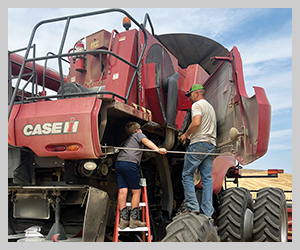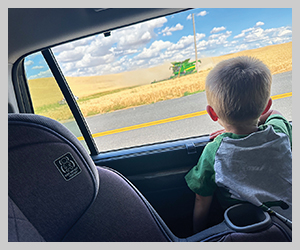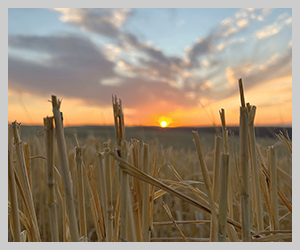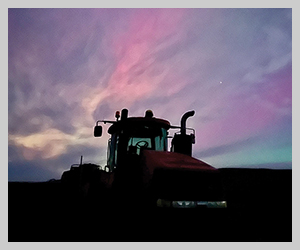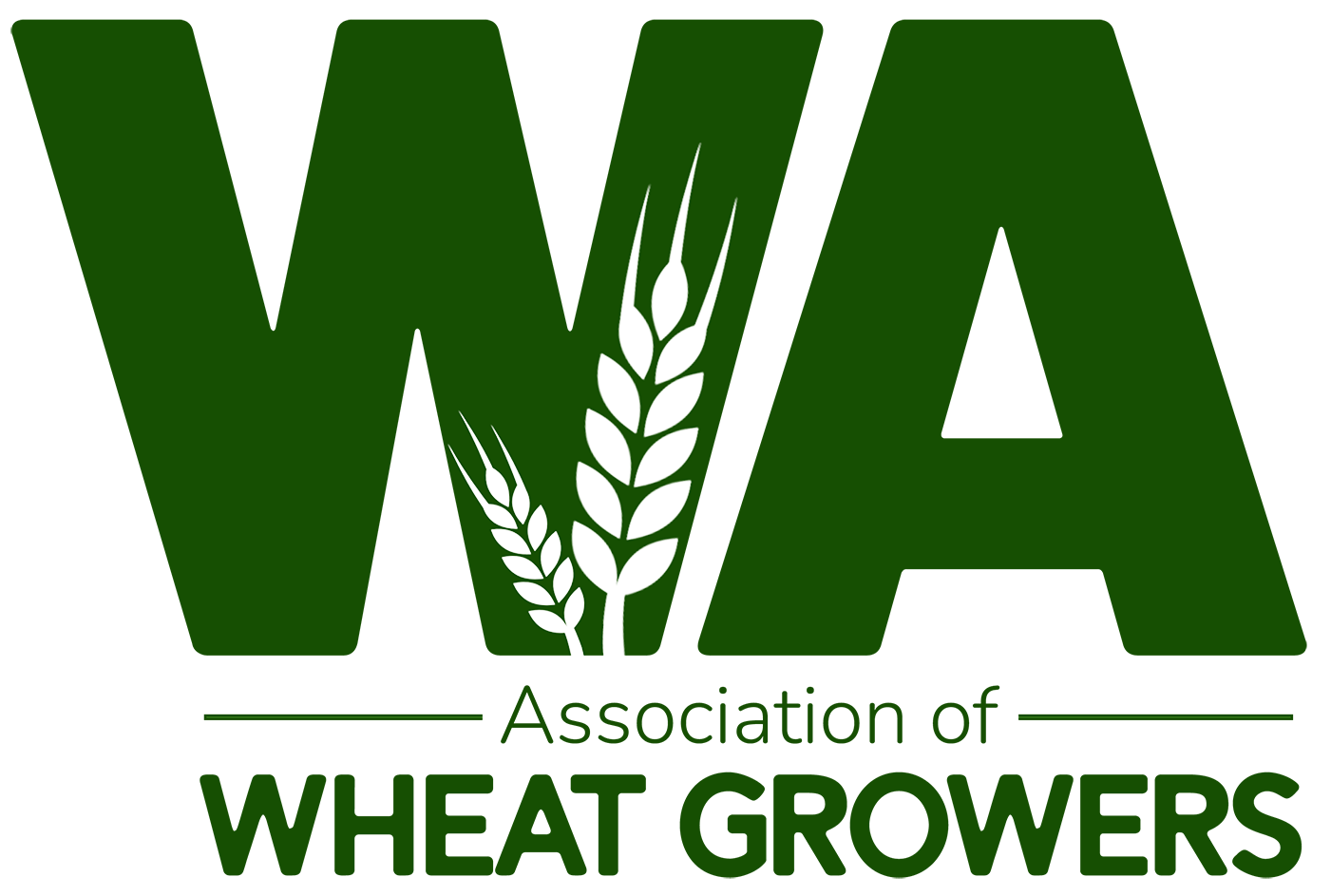Land is often a farm’s most important asset, and many retired farmers and farm families are opting to become landlords rather than selling land. Recognizing that fact, the Agricultural Marketing and Management Organization held a special workshop specifically for landlords in March.
Attendees heard a market update from Rob Froom, senior central hedge desk manager at United Grain Corporation; a snapshot of land values in Eastern Washington from Patrick Creagh, a senior appraiser from AgWest Farm Credit; and asked questions from a panel of landlords and tenants. Jolene Brown, a popular ag speaker, moderated the panel.
Market mayhem
Froom kicked off the landlord session by examining the current market (as of late February), which he called “the type of market you have to work at.”
Several things are weighing wheat markets down, including inflation, a high U.S. dollar, the Russia-Ukraine war, and shipping problems through the Suez Canal. Froom explained that one-third of global shipping travels through the Suez Canal. Because of attacks by Houthi rebels, commercial ships are traveling around the Cape of Good Hope instead, which adds 20 days to the trip at a cost of $1 million.
For many producers, the price of wheat is hovering close to the cost of production. Russia is still the price trendsetter, and Froom said they are forecast to have another year of record production, which if it happens, will further weigh on prices. Because of the low cost of wheat, customers are sourcing cheaper wheat outside the U.S., which is stagnating U.S. export demand. The U.S. Department of Agriculture expects the U.S. to export the lowest amount of wheat in nearly 50 years this marketing season, which ends May 31. The situation hasn’t been helped by China’s cancellation of soft red winter wheat sales in recent months.
“It’s expensive to be a wheat farmer,” Froom said. “Guys are choosing to plant other things.”
Soft white wheat isn’t doing much better. Sales are “scraping along.” Japan, one of the main customers for soft white wheat, is at the slowest purchase pace in a decade. Froom pointed to dietary changes (more rice, less wheat) and increased purchases of Canadian and Australian wheat. Corn prices are also weighing on the soft white wheat market.
What can growers do? Froom cautioned against being a reactive seller.
“Marketing grains off emotions is a recipe for disaster,” he said.
Instead, growers should rely on predictable, seasonal patterns that influence price, including:
- Weather.
- Planting. When growers are out planting and seeding, they won’t be marketing grain much, which means less hedge pressure.
- Harvest. If you are bringing grain to the elevator and so are neighbors, there’s lots of grain available to sell.
- Global demand. Customers generally don’t want to buy the tail end of old crop. Typically, new crop prices are cheaper, so customers will wait to buy new crop.
Other advice Froom gave includes using the weekly Commitments of Traders report and doing fundamental and technical analysis.
“Don’t fight a bear market by putting your head in the sand and closing your eyes. Work with others to build a price. Too many people will wait and hope, and that is one of the worst strategies you can do,” he said.
Froom is manager of United Grain Corporation’s Profit Partner Program, which helps facilitate and educate producers in managing risk by providing access to global markets, market intelligence, and pricing tools. More information is at unitedgrain.com/products-and-services/ugc-profit-partner-program-purpose/. They are also on X (Twitter) at @UGCProfitPartner.
Land values continue to rise

The markets may be down, but the value of farmland in Eastern Washington is not. Creagh told attendees that dryland farm values are generally stable to increasing despite higher interest rates, high input costs, and lower commodity returns.
Comparing dryland prices over the last nine years in the Inland Empire, most categories showed an overall increase:
- In the low rainfall (12” or less) area, the average 2023 price per acre was $827. Creagh explained that while the average tends to bounce up and down, overall, it is generally increasing.
- In the medium rainfall (13”-17”) area, the 2023 average price per acre was $1,700. The trend line is fairly flat, but he explained that may be because the dataset is limited by size; there may be fewer acres available in that rainfall zone.
- In the high rainfall (18” and above) area, the average 2023 price was $3,581 per acre, slightly below the 2022 average, although the overall trend is increasing. “I don’t believe there’s been a decrease in value from 2022,” Creagh said. “I think it is a lack of available land.”
Rainfall is the biggest impact to land values. Another major impact is the increasing interest in farmland that can be used for power production, like solar energy or a wind farm. Pastureland is generally valued less than cropland, but it follows the same overall upward trend with recreational land buyers influencing pasture values across the area.
Creagh also talked about lease structures. The two most common lease structures used on cropland are cropshare and cash rent.
Under a cropshare lease, the landlord receives a percentage of the crop produced and shares some expenses with the tenant, usually set at one-third for the landlord and two-thirds to the tenant. It is common for the landlord to pay 100% of the property taxes and use the same split for crop insurance. A variation of a cropshare lease is a net share, where the landlord receives a lower ratio of the crop but shares no expenses with the tenant.
Under a cash rent lease, the landlord receives a cash payment with no sharing of the crop or input expenses. Creagh has also seen flex leases, where the lease is set up as a cash rent, but if grain prices go higher, so does the cash rent.
“The best lease is the one the landlord and tenant agree with,” he said.
Finally, long-term leases can affect the marketability of cropland, especially if a farm property needs to be sold and has a long-term lease in place.
Panel

The landlord session finished up with a panel moderated by Brown, a noted ag speaker who specializes in family farm planning and conflict resolution. She had some advice on how to be a landlord of choice:
- A clear lease agreement should spell out who pays expenses and what type of expenses, the duration of the lease, how is land to be used, what are permitted activities, how and how frequently do you want to be communicated with. “If you as the landlord have specific things you want on the land, make sure it is clear in the lease,” she said. “The more clarity you can give, the more they (tenants) appreciate it.”
- Are you willing to share and does the tenant want to know things like historical information of the land or the history of its soil health?
- What decisions do you want to be involved in?
- Who pays for property investments and improvements such as fencing, drainage measures, etc.?
- Have a fair rent structure based on the competition in the area. As you set rates, do you take into account the value the tenant brings to the land (and the value you as the landlord bring)?
- Recognize the work the tenants do and thank them. Does your lease represent their loyalty to you?
Brown also had advice on how to be a renter of choice:
- Be a member of grower associations.
- Be financially stable.
- Be willing to offer a plan on how you are going to use the land. What have you been planting? How will you control weeds? What will you use as fertilizer?
- Have recommendations and references from those you’ve worked for in the past.
- Be transparent in your communication. What are your plans for the property?
“A good renter will be thanking you, just as a good landlord will be thanking them,” Brown said. “It’s all about a relationship. You get to choose what kind of landlord you want to be. You get to choose what kind of renter you want to be.”
Brown then introduced the panel of landlords and tenants and took questions from the audience. On the panel were Eric Hille, a Ritzville farmer who leases from neighbors and family; Randy Suess, a retired Whitman County farmer who leases his family farm to nonfamily; Jim Whitman, a retired farmer from Benge who leases to nonfamily members; and Marie Denny, a farmer in Spokane County who leases land from family and nonfamily.




